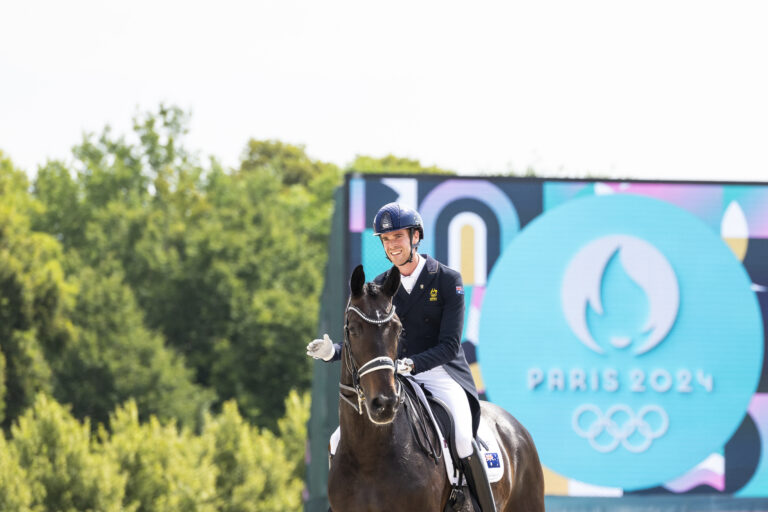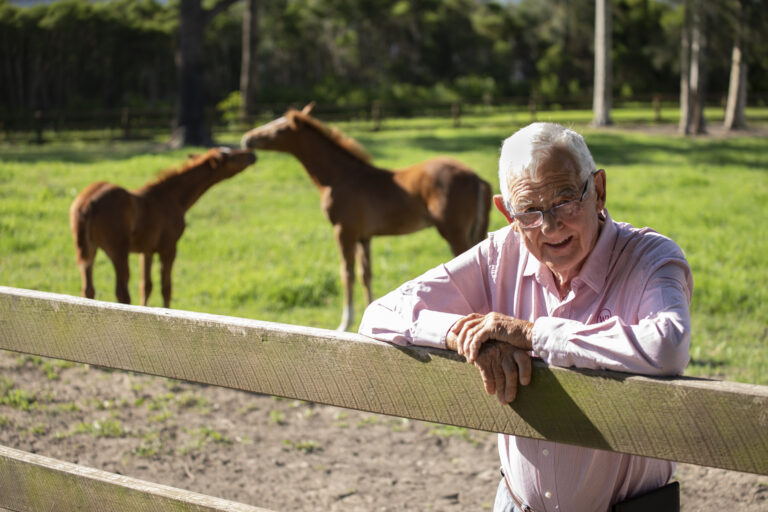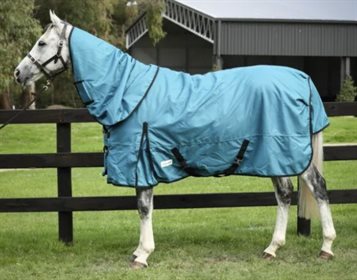Marmelo has been ruled out of the 2019 Melbourne Cup.
© Racing Photos / Racing.com
By Equestrian Life
Two international raiders for this year’s Melbourne Cup have been ruled out of the race after failing CT scans at the University of Melbourne Equine Clinic.
Marmelo, last year’s runner up in the Cup, and Ispolini, have both been withdrawn under direction from Racing Victoria veterinarians. Stewards issued a release on Wednesday night saying both Marmelo and Ispolini had been withdrawn from the $8 million race due to veterinary advice.
Stewards received a RV veterinary report advising that Marmelo would not be fit to compete in the Melbourne Cup if it was held on the day of final acceptances closing (Saturday, 2 November 2019) as stated within the conditions of the race,” the release said.
“Marmelo was referred to the University of Melbourne Equine Clinic to undergo a standing CT scan across the weekend after showing signs of soreness upon inspection by RV veterinarians.
“The results of the standing CT scan indicated an incomplete fracture in the horse’s near fore cannon bone and an incomplete fracture in its off hind cannon bone.
“Having considered the RV veterinary report, in addition to veterinary reports submitted by trainer Hughie Morrison, Stewards acting under AR20(d) have ordered the withdrawal of the horse from the Melbourne Cup.
“Stewards made their decision to ensure the safety and wellbeing of Marmelo, along with his potential competitors and riders.”
Ispolini was referred to the University of Melbourne Equine Clinic to undergo a standing CT scan across the weekend after showing signs of soreness upon inspection by RV veterinarians. The results of the standing CT scan indicated pre-fracture pathology within the horse’s right front cannon bone.
“Stewards received a RV veterinary report advising that Ispolini would not be fit to compete in the Melbourne Cup if it was held on the day of final acceptances closing (Saturday, 2 November 2019) as stated within the conditions of the race.
Having considered the RV veterinary report, in addition to veterinary reports submitted by trainer Charlie Appleby, Stewards acting under AR20(d) have ordered the withdrawal of the horse from the Melbourne Cup.”
While the team behind Ispolini have largely accepted the decision despite some disappointment, however Marmelo’s connections have been very outspoken regarding the case and have threatened legal action.
With the public spotlight on the Spring Racing Carnival following the ABC’s damning report into animal welfare concerns, any mishaps on Melbourne Cup day – particularly in the main race itself – would be nothing short of a PR disaster. From an animal welfare perspective, it seems logical that any horses showing any sort of potential injury pre-race shouldn’t run.
The University of Melbourne Equine Centre, led by head vet Chris Whitton, have long been involved in extensive research surrounding the topic of “micro fractures” in racehorses and how they can lead to catastrophic injuries when not given adequate recovery time.
Equestrian Life published an article in the Sept/Oct 2017 edition of the magazine, about the research being undertaken in this area. While the research has no doubt progressed over the past two years, it gives a bit of background to the topic and some reasoning behind the sorts of fractures and pre-fracture pathology seen in some racehorses.
You can read the full story below:
UNDERSTANDING MICROFRACTURES
Catastrophic injuries — severe fractures — in racehorses occur in Victoria at a rate of just over one per 3000 starts. While it is the lowest rate in the world, Professor Chris Whitton is shedding light on a potential cause — microfractures.
In 2011, Red Cadeaux ran second in the Melbourne Cup. The crowd favourite went on to become the first international galloper to contest the Cup five times and was crowned runner-up on three occasions. In the 2015 Cup, the 10-year-old suffered a sesamoid bone?fracture in his left front fetlock. Despite first class care at the University of Melbourne’s Equine Centre, it was eventually decided that euthanasia was the kindest option. Prof Chris Whitton, head of the Equine Centre, treated Red Cadeaux — and it wasn’t the first time he’d seen this type of injury in a racehorse.

Professor Whitton and his team at the University of Melbourne’s equine hospital in Werribee.
Image supplied by University of Melbourne Equine Centre.
It seems that serious fractures could occur through weakening of the bone due to microfractures. Microfractures — which can also be referred to as “bone fatigue” — can be defined as miniscule cracks that develop with repeated loading, at levels of load that do not cause damage if only applied once. Individually, microfractures aren’t an issue. They occur to some extent through normal activity in many species. However, repeated high loads on the joints can cause microfractures to accumulate.
Prof Whitton explains that although bone is often imagined as hard, inflexible material, it is actually a living, active, flexible tissue. Over time, it can repair itself via a process known as remodelling. During this process, the bone reabsorbs damaged sections and replaces bone material, returning its strength. However, when training becomes intensive, damage may accumulate quicker than it repairs, increasing the importance of rest periods to allow the bone to recover.
This scenario can be seen with racehorses: intense training over long periods of time, with short spells in between. An accumulation of microfractures is where joint surface injuries and major fractures can occur. The accumulation of microfractures on average occurs with age; some might argue this is to be expected and typical in many species. However, Prof Whitton points out that in racehorses we see it in young athletes — not ageing animals.

Professor Chris Whitton, head of the University of Melbourne’s Equine Centre, is currently researching the phenomenon of microfractures in racehorses.
Image supplied by University of Melbourne Equine Centre.
At the start of this year, Prof Whitton received increased funding from Racing Victoria, the Victorian Government, and a major contribution from the University of Melbourne, allowing him to ramp up the research he’d being doing at a lower level for the past few years. While the study is driven by a desire to improve horse welfare, there are also people on the backs of these horses who risk injury when they fall — so the benefits of decreasing the occurrence of catastrophic injuries are twofold.
This area of research is complex and there are many things to consider, such as how much work horses are getting, how often they’re getting rested and for how long, how well their bones are adapting to the training program, and how much damage is accumulating. All horses are different and all these factors interact in a complex way. As Prof Whitton explains, the only way to understand it is to model it mathematically once you’ve got lots of good data; this could then make it possible to understand the risk of catastrophic injury for an individual horse.
TRAINING HABITS IN AUSTRALIA
Prof Whitton says that while many racehorses do accumulate microfractures, some don’t. This indicates that a variation in training methods could be an influential factor. “We know that training is an important contributor to the problem; there should be ways of doing it to minimise the risk while still getting the horse fit. We’ve been trying to understand exactly what trainers (in Australia) are doing. We’re in the process of putting together data from a survey that was done on Victorian trainers to understand how they’re training their horses. It’s (training methods) something that’s not well documented; it tends to be passed on from trainer to trainer and until recently trainers didn’t have access to evidence based information that could guide them. If there is variation (in training methods), we can look at ways to better understand subsequent injury rates and identify safer training practices,” says Prof Whitton.
MECHANICAL PROPERTIES
The mechanical properties of the bones and how load is generated in the lower limbs is information critical to understanding why microfractures and catastrophic injuries occur. “We’re trying to understand how loads are generated in the lower limbs in particular (in galloping horses) and what those loads are. The ultimate aim is to determine ways of minimising excessive loads,” says Prof Whitton. “For a horse galloping at a moderately quick gallop… we’re calculating four tonnes with every stride on the fetlock joint.”
To date, much of the data Prof Whitton and his team have been using for measuring limb loads is from California, comparing dirt and synthetic tracks. They are trying to develop the expertise here so that data can be gathered on our turf and synthetic tracks to see the effect these surfaces have on the horse.
Prof Whitton’s research has also looked at the mechanical properties of the bone underlying the cartilage in the fetlock joint (cannon bone), because that seems to be a common site where injury develops. “We’ve also being working on the mechanical properties, loading bones in the lab and seeing how the bone responds. We’ve shown that when the bone is better adapted — so when there is more bone there — it is more resistant to fatigue loading. This is something no one has shown before.” This research is an important step taken in the past 12 months, with Prof Whitton explaining that this ground-breaking research is important in terms of understanding how to make horses more resistant to injury. “Previously, people have assumed if there is too much bone underlying the cartilage that’s a risk of injury as well — but we’ve shown that’s not the case, and it actually makes them more resistant,” he says.
The skeleton is dynamic and bone adapts to whatever the horse has to do; if you put less stress on the skeleton, it doesn’t necessarily equate to less risk. The horse only carries as much bone material as it needs, as carrying excess bone material is inefficient. The only way to allow it to adapt is to begin doing the exercise in small/short bursts, allowing the bone to adapt without injuring it.
When it comes to the accumulation of microfractures, Prof Whitton and his team have already created mathematical models around how the bone adapts to training and they’re already producing some great information. For example, models show that the standard six-week rest a racehorse gets when spelled allows for turnover/replacement of 25% of the bone. The question is, if the rest period is increased by another week, is it a waste of time or will the extra week turn over another 5% of bone? To Prof Whitton, that extra 5% would be significant. This sort of result would mean that every little bit of rest is beneficial.
Are thoroughbreds just more susceptible to catastrophic injuries? Are their bones weaker? Prof Whitton doesn’t believe these injuries are breed specific — rather, they are discipline specific. “If you do something to the bone that it’s not well adapted too, too quickly and too intensively, then you’re at risk of injury,” he says. In other words, it’s not the breed — it’s the combination of speed and distance, and managing the bone to deal with it.
THE AIM
The study so far has looked at properties of the bone underlying the cartilage, and how to make it more resistant to injury. This knowledge is being combined with findings related to training practices, and also microfractures and how they accumulate. The idea is to use this information in computational models that allow researchers to understand individual training programs and what their risk might be. The aim is to have a clear picture of how to reduce the accumulation of microfractures in racehorses — thereby reducing the occurrence of catastrophic injuries.
Prof Whitton would like to produce a safety margin for bone fatigue, i.e. a certain number of rest days to offset a certain number of work days. He uses the aircraft industry’s conservative approach to material fatigue as an example: wide safety margins mean that if an aircraft part has a fatigue life of 100,000 hours, then it’s replaced at 50,000 hours.
APPLICATIONS BEYOND RACING
The study is exclusive to the racing industry, however, the general principles apply to all horses. As Prof Whitton explains, “It’s just that racehorse are at the extreme end of what they are doing to their skeleton.” Although the fluxes and changes are not as much as they are in racing when you change training intensity, the general principles apply to all ridden horses.
Prof Whitton says there has been interest in his research from the endurance racing industry. “As the level of intensity of competition in endurance racing has increased, the speed and distance they’re going at have increased, and they’re getting these similar catastrophic injuries that we get in the thoroughbred racing industry,” he says. There’s a lot of concern in the endurance world, and Prof Whitton has been in contact with the FEI who are committed to maximising safety for horses and participants.
When it comes to horses in other disciplines, Prof Whitton says that although the average ridden horse isn’t accumulating microfractures or suffering catastrophic injuries as seen in racehorses, it’s important to ensure your horse’s bones are well adapted to what you want it to do. Don’t do a lot of excessive, repeated work — mix it up. He uses eventing as an example: “We’ve had horses (at the clinic) that people have competed on… when asked, we find they’ve not necessarily done a lot of training for an event. They’ve gone out and competed at a fairly intense level with a poorly adapted skeleton. Unsurprisingly, the horse gets injured.”
It’s about ensuring the bone has been given a chance to adapt to the job at hand. For example, if you’re doing a three-day event cross country course, you don’t go and ride a full length course without appropriate preparation. You need to go at the speed you’re going to go, over the jumps you’re going to jump, but in short bursts of that intensity and slowly increase the duration of the exercise until you’re closer to what the horse has to do. Once the horse is fit and able to do it, then you only need to do short bouts of that exercise a couple of times a week to keep the skeleton adapted to that task; you don’t need to overdo it.
CONCLUSION
Prof Whitton’s current funding extends for three years. Like all research, the study will take time and he notes that progress is “never as fast as you’d like”. That’s the nature of research — it occurs incrementally rather than in large leaps. The team expects to make major progress in the next two years and acquire some great information, however, they don’t expect to have solved everything — there will be more questions raised and more things to investigate.
“We’re already at the stage where we can make reasonable recommendations to trainers around what they should be doing. We’re hoping to improve that and make these recommendations more robust over time,” explains Prof Whitton. He acknowledges that you can never eliminate risk and injury, as being a horse is inherently risky; they’re prone to injury even if you wrap them in cotton wool.
Whether it’s a high-profile galloper like Red Cadeaux or a little-known horse at the picnic races, no one wants to see these animals suffer serious injury. It’s not good for the sport — but most importantly, it’s not good for the horse. As Prof Whitton says: “It’s important to keep the welfare of the animal uppermost. The horses need people in their corner looking after them, because their welfare is critical.”
READ THE LATEST NEWS ARTICLES HERE









